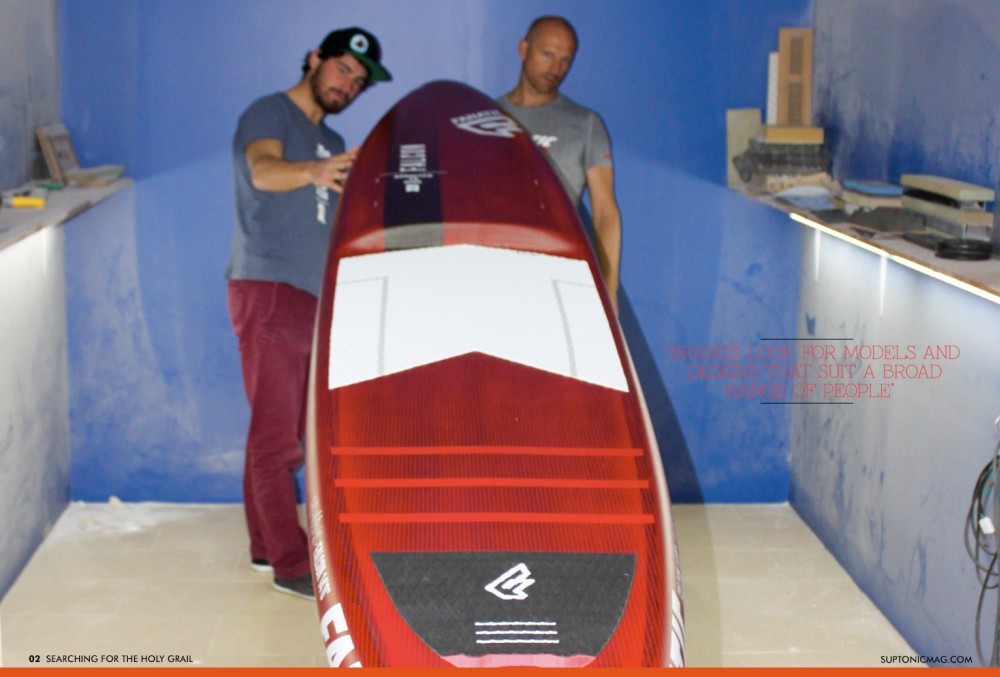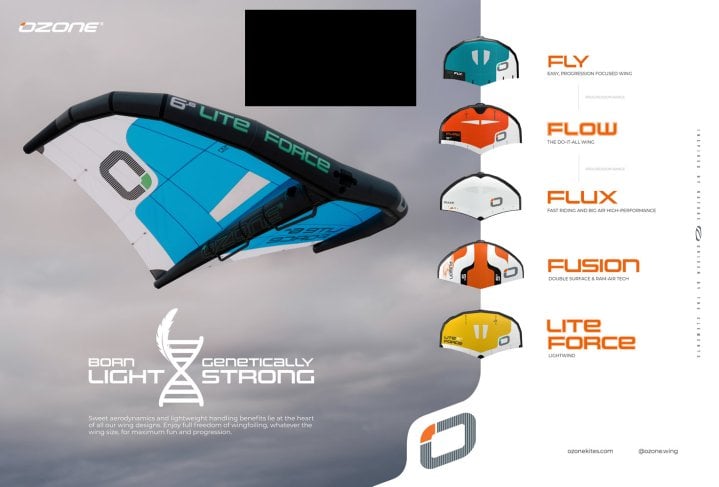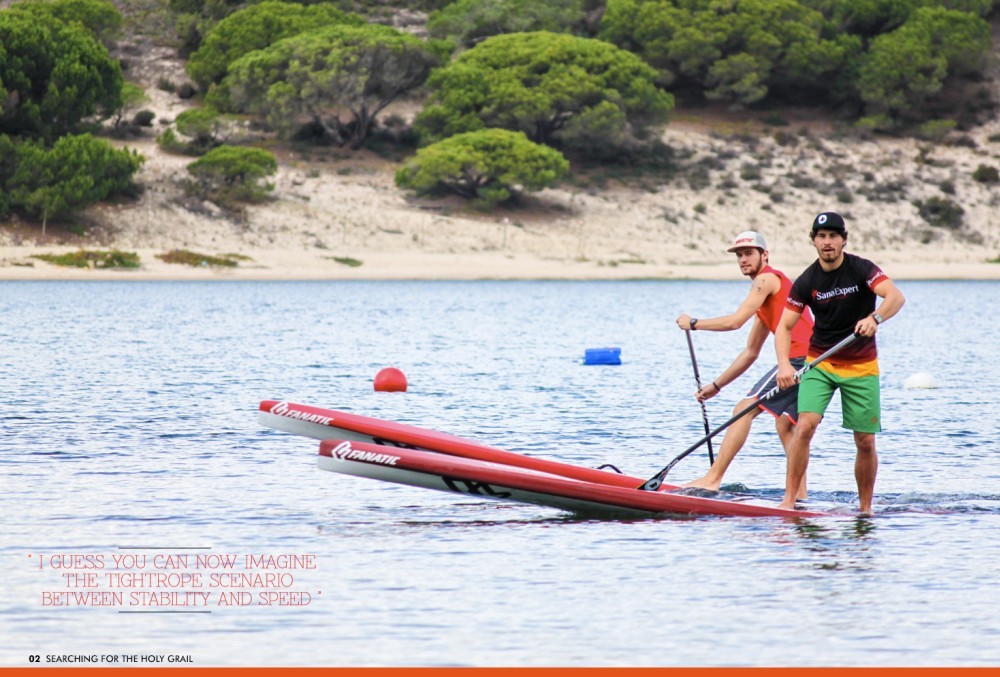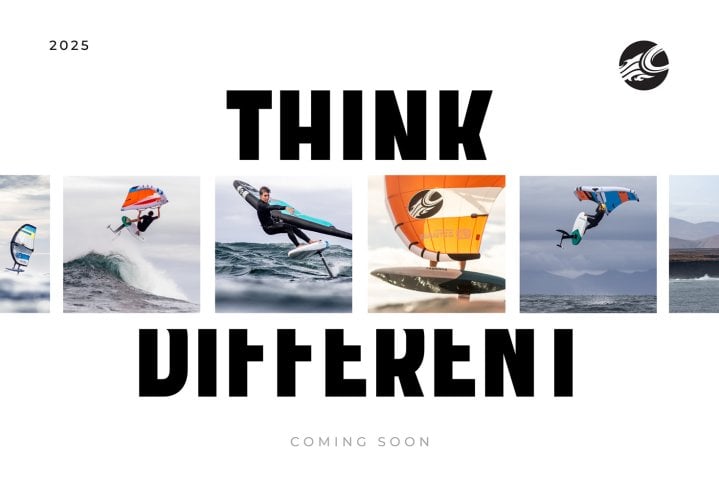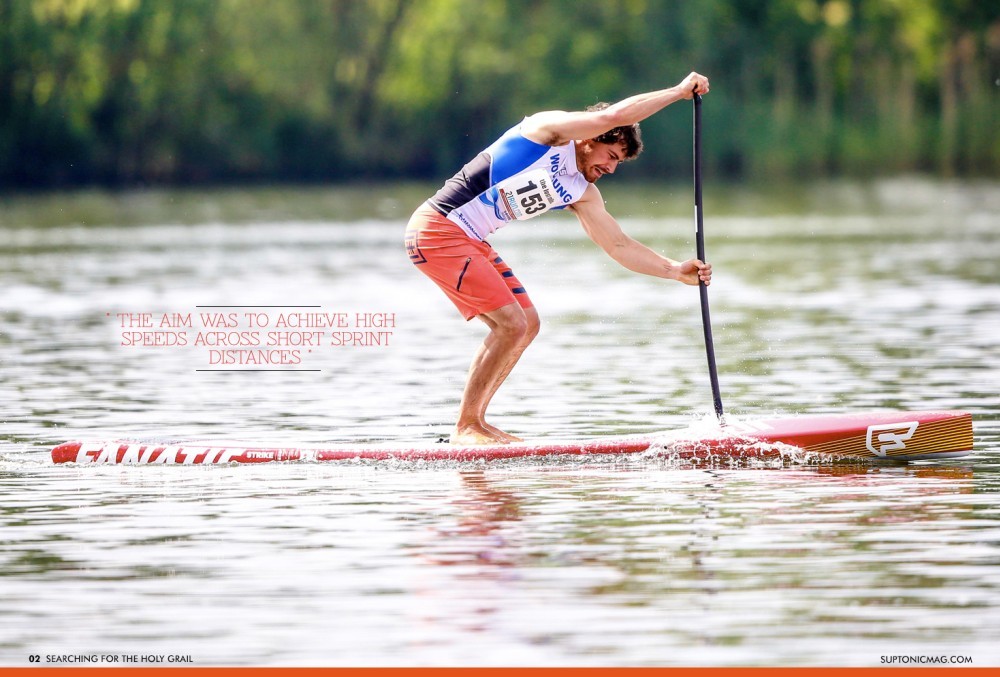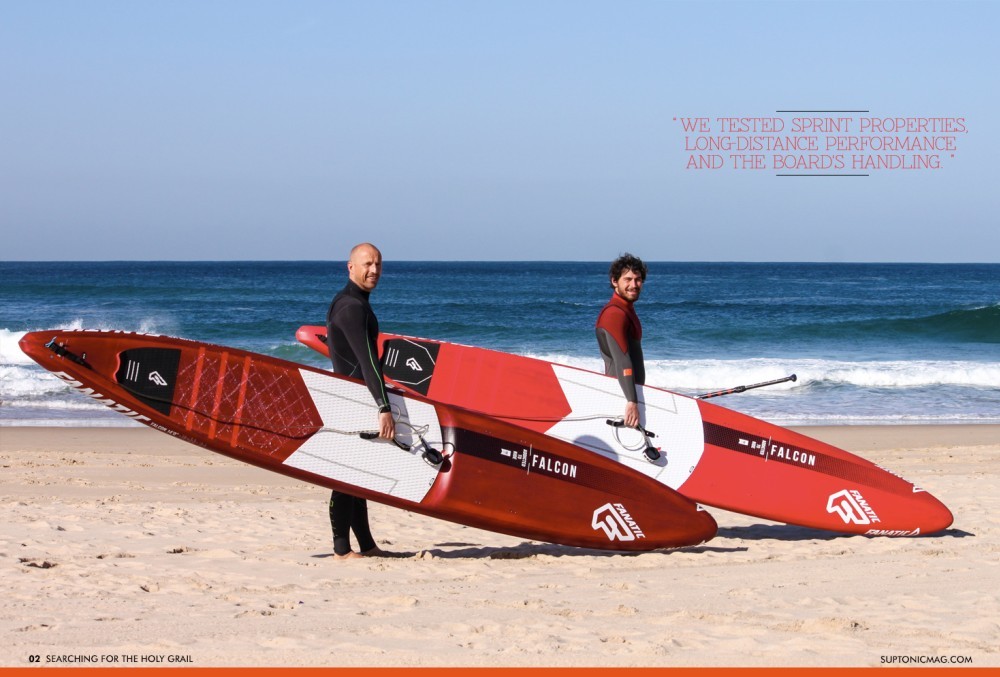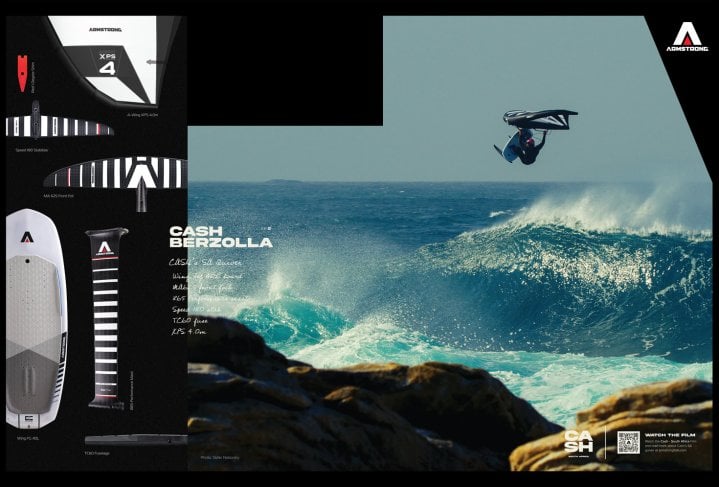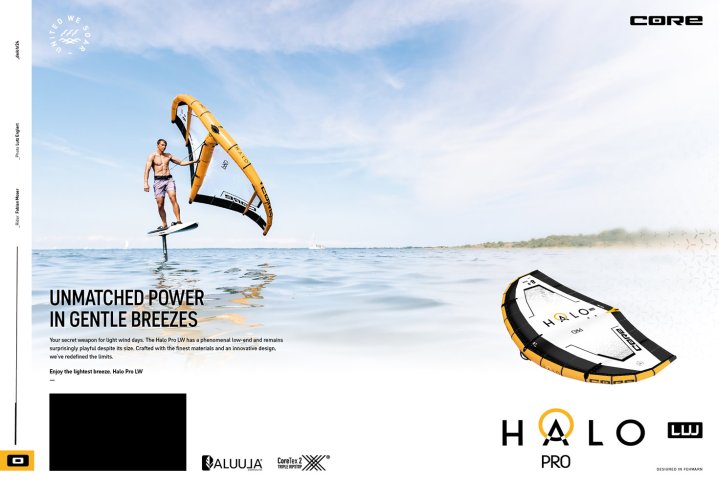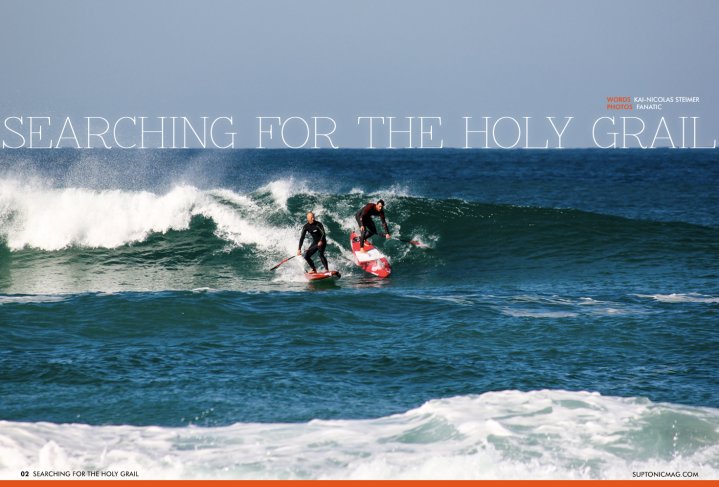
Searching For The Holy Grail
Issue 2 / Tue 1st Nov, 2016
Kai-Nicolas Steimer is a naval architect and champion paddle boarder; he landed a dream job working with Fanatic to help them design and test the 2017 race boards. It’s a delicate balance between speed and stability as you search for the perfect combination of dimensions to create a race-winning machine!
The development of Stand Up Paddleboards has been rapid, to say the least. There are an almost infinite set of parameters that can define how a board will be shaped and how it will ride. How do you master those dimensions to make something that can win races, win hearts and of course win customers? A degree in naval architecture is a good place to start…
Kai-Nicolas Steimer has just that, but he’s also got a trophy cabinet that is buckling under the weight of silverware too! He was a natural fit for Fanatic when it came to developing the 2017 SUP race board range. The enthusiastic German, with an infectious level of stoke, scored the job many of us dream of. It isn’t all about getting new toys to play with, though; there is far more to it than just that! Kai recounts his experiences developing the new boards for us, read on and discover exactly what goes into making that "simple" board under your feet…
It's probably every young and talented board rider’s dream to influence the development of their gear; even create their own custom board. This vision is usually driven by the idea of optimising the gear to suit their own needs and encourage innovative thoughts. The input from a riders' perspective helps in making custom boards, but it's hard work getting them into production. Brands look for models and designs that suit a broad range of people, rather than producing specialised shapes optimised for one rider.
With Fanatic basing more and more of its R&D in Europe last year, my dream came true when they involved me in the development of their SUP race board range. Having studied naval architecture, I have a sound knowledge of physics, which when combined with my passion for the sport, gives me a well-rounded knowledge base for all kinds of different shapes.
As production boards need to work for a large target group with various levels of skill, it's even more important to determine some basic points of the boards' properties. As the sport is still quite young and the racing scene quite small, there are two main focal points for the development of SUP race boards: stability and top speed.
Our aim is to produce boards that are stable enough for ambitious amateur paddlers, with enough potential to permit new speed records to be set by professional racers. The process of building boards that allow for this is much like walking a tightrope, as often when you try and push one component to a more extreme level; you end up compromising performance elsewhere. As stability is a fundamental requirement, the aim is to create the perfect composition that diversifies the board's width, rail design or length.
The width of a board offers the paddler static stability; increased 'uplift' is given to the rails making it more balanced overall. It's a similar concept to that of a catamaran: The further apart the hulls are, the more difficult it is to capsize the craft. Just as important as width is the length, which when combined determine the distribution of volume.
A pointed nose and tail section optimises an uninterrupted glide through the water, but because there is only a short wide section in the middle, this kind of design has less stability. The opposite of this is a wider shape overall with softer curves for a more stable platform.
During SUP races, fast kick-turns are paramount so stability is gained through a squash tail to maximise volume in this area. Another option for creating a stable platform is by working on the shapes of the rails, which allows you to produce dynamic stability through motion. The rail design also affects the roll rate, the speed of toppling the board from one side to the other, which offers a sense of security to the paddler.
There's such as thing as passive and active boards. Active boards, those with rounded rails, have less drag than those with angled rails, which means the paddler has to "actively" focus on not toppling the board. Angled shapes create swirls at the rails slowing the rotation of the board down automatically, making it passive.
The speed potential of a shape is another critical aspect. To reduce drag, it's essential to minimise the deflection of the water at the rails as well as reducing the areas that are covered by the water. If you were to focus only on speed and rail shapes, the board would be thin with a rounded bottom, but it would be tough to paddle.
To optimise the overall performance, you change the outline of the board to a shape that allows for high speeds as well as having a high degree of stability, then minimise the surface area and outline to a slightly angled bottom-side for top turning abilities. Understanding all of this, I guess you can now imagine the tightrope scenario between stability and speed when creating perfect production boards. However, it's worth remembering; a more stable board may be a bit slower, but it will offer the paddler enough stability to put more power into their stroke. Less stable platforms may mean that the paddler may struggle to create the same power without disrupting the board.
A new concept and development of a board always starts with the feedback from the previous model. In our case, we figured out the strengths and weaknesses of the older Falcons and Strikes using customer and team rider feedback. For example, the Fanatic Strike has enormous speed potential, yet it lacks in stability due to its rounded bottom. For 2017, we wanted the Strike to be as fast as the previous model but with more stability, which in turn should attract a wider audience of paddlers.
Longstanding Fanatic designer Sebastian Wenzel designed the new prototypes using 3D technology. Taking the development step by step, we started adapting the 2016 Strike shape to maximise stability. Meanwhile, a prototype with a similar aspect ratio was being built with the 3D software. We then took both prototypes and tested them in the same conditions. Before this, we try to get a close look at the two prototypes' geometries and dimensions to fully understand the variables when paddling.
In the first test run, we compared the two prototypes to the 2016 production Strike on flat water, across different distances, and speeds. To get reliable results, we repeated the tests with different riders, on various days at the same spot. We received a big pool of runs and stats to determine which was the best prototype. The aim was to achieve high speeds across short sprint distances, as well as honing the turning abilities.
The results showed that both prototypes produced better results than the 2016 Strike, but especially in terms of the handling properties and high top speeds. We also had to compare their performance across longer distances. To keep it relative we determined a reach and a speed to paddle at. After paddling, we measured each riders' pulse to find out how exhausting it was to paddle the reach.
Because each person's pulse isn't constant, it took several runs to estimate the effort. In this test we were also right; both prototypes had a higher average speed than the 2016 Strike. The reason for this was the changes we made to its stability which allowed the paddler to channel all their power into their stroke. The new shapes were also tested in choppy conditions and beach breaks where we could optimise their handling.
In the second test run, we worked on optimising our favoured prototype. As in the first test run, we tested sprint properties, long-distance performance and the board's handling. The changes we made increased the performance once more and convinced us across all performance aspects. This became the board that went into production for 2017.
The development of the new Falcon proceeded the same way as the Strike's development. The first prototype was built after customer and team rider feedback. One fundamental aspect was the improvement of the Falcons flat water performance and turning properties in relation to the European Race Association.
Our first tries failed, so we had to take a different approach to improve the properties we wanted. After many 3D renderings, we found the perfect shape for downwinders in Australia, as well as for the European Open Ocean races. When the first prototypes were built, we tested them in different conditions like flat water, shore break and full on downwinders. The results confirmed to us that we had made the right decisions.
The development of a new board is a long process that takes time. First, new designs need to be prepared and prototypes produced. Then we embark on several test runs. All this makes a long lasting project. The work around the new Fanatic range was exciting for me. I spent many days testing the new prototypes in Portugal. It gave me a lot of experience and an even closer view into shaping Stand Up Paddleboards. It took some time to understand that not every tiny idea in your head will work because SUP is a sport that is influenced by many different variables, facts and conditions.
After all that development I’m very satisfied with the new range, and I hope that many paddlers around the world are as happy as me.
Videos
By Kai-Nicolas Steimer




